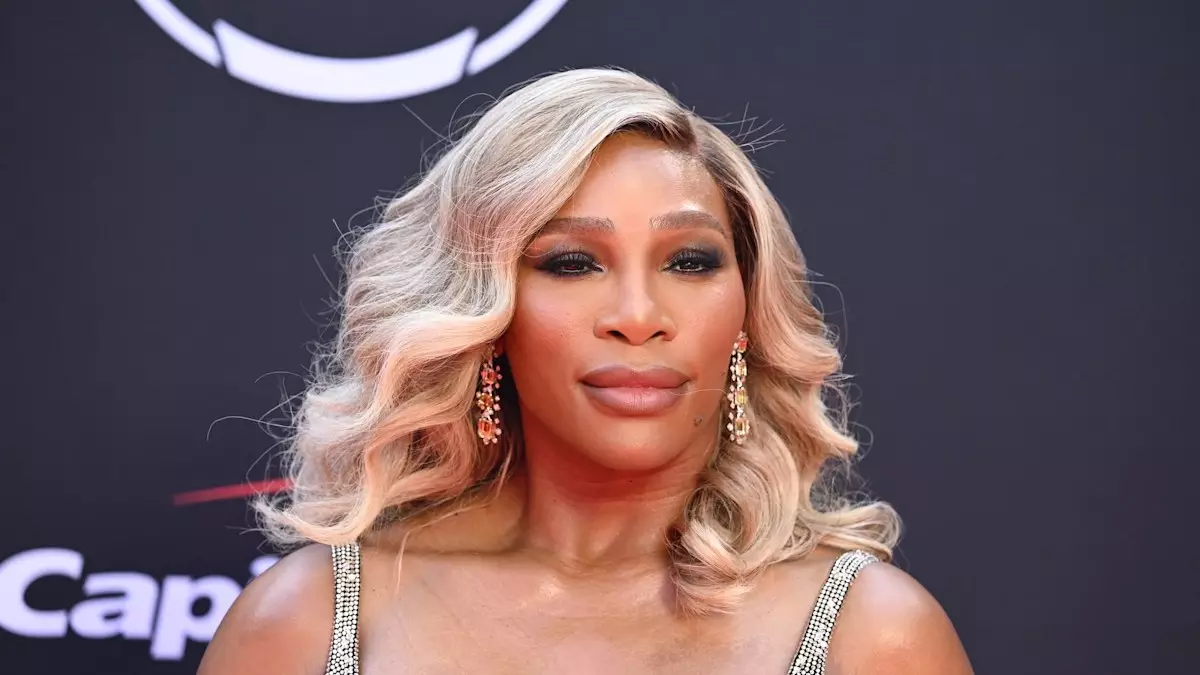Serena Williams, a name synonymous with tennis excellence, transcended her sport once again when she graced the stage during the Super Bowl Halftime Show. This unexpected appearance showcased not only her multifaceted talent but also marked a significant moment in her career, allowing her to step out of the traditional confines of athletic achievement and into the world of pop culture. Her brief but impactful performance alongside Kendrick Lamar offered a fresh narrative, intertwining the realms of sports and music in a way that resonated deeply with audiences around the globe.
Williams’ dance, specifically the crip walk—a move she famously executed at the 2012 Olympics following her victory over Maria Sharapova—has long been a subject of both admiration and controversy. At that time, the crip walk was criticized for its association with her hometown of Compton, California, reflecting the racial and cultural complexities inherent in the dance. By revisiting this act at the Super Bowl, Williams arguably reclaimed the narrative surrounding the crip walk, transforming it into a symbol of empowerment rather than divisiveness. “I knew my winning dance after the Olympics would pay off one day. End of story,” she remarked in a candid post, illustrating her gradual transformation from a target of scrutiny into a venerated icon.
Behind the Curtain
Serena offered her followers a glimpse into the preparation leading up to her Super Bowl performance, showcasing both the glamour and nerves that accompany such high-profile events. Her excitement was palpable as she shared snippets via social media, illustrating not only her physical readiness but the emotional weight of the moment. Williams’ infectious enthusiasm resonated, emphasizing that even seasoned athletes feel the thrill of performing on an iconic platform. “That was the best ten seconds of my life!” she exclaimed backstage, encapsulating the sheer exhilaration of the moment.
The aftermath of Williams’ performance generated responses that reflected both pride and sentiment. Her husband, Alexis Ohanian, was vocal about his admiration, stating, “Let ’em know. Like Kendrick said, ‘this is bigger than music.’” His words underscored the broader implications of her appearance, hinting at the cultural significance not just of the performance, but also the relationship dynamics it illuminated. To many, Williams’ moment on stage represented a resurgence, a reclamation of her narrative in a space often dominated by male figures.
The Complex Web of Relationships
The significance of her collaboration with Kendrick Lamar was further accentuated by the shared history between Williams and rapper Drake, with whom she had an on-and-off romance. This complex dynamic added another layer to her performance, especially considering Kendrick’s public feud with Drake. When Williams joked, “If I’ve learned anything this year, it’s that none of us, not a single one of us, not even me, should ever pick a fight with Kendrick Lamar,” it was a nod not only to the competitive spirit inherent in both music and sports but also to her own positioning within that narrative.
Ultimately, Serena Williams’ participation in the Super Bowl Halftime Show was not merely a fleeting moment of fame. It was a potent reflection of the intersection of sports, culture, and personal narratives that continuously shape the landscape of popular entertainment. By performing the crip walk, Williams challenged the stigmas tied to the dance and redefined her identity—not just as a celebrated athlete, but as a cultural icon who wields influence beyond the court. Her journey from controversy to celebration resonates, illustrating the power of reclaiming one’s narrative amid the scrutiny of public perception. In doing so, Williams not only entertained millions but also sparked crucial conversations about race, culture, and the ever-evolving nature of fame in the modern era.

